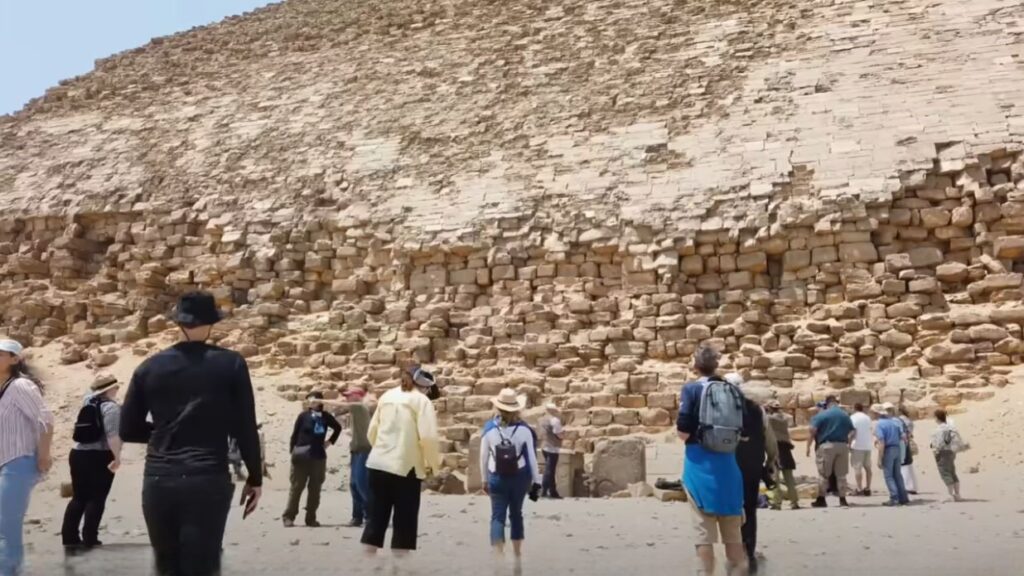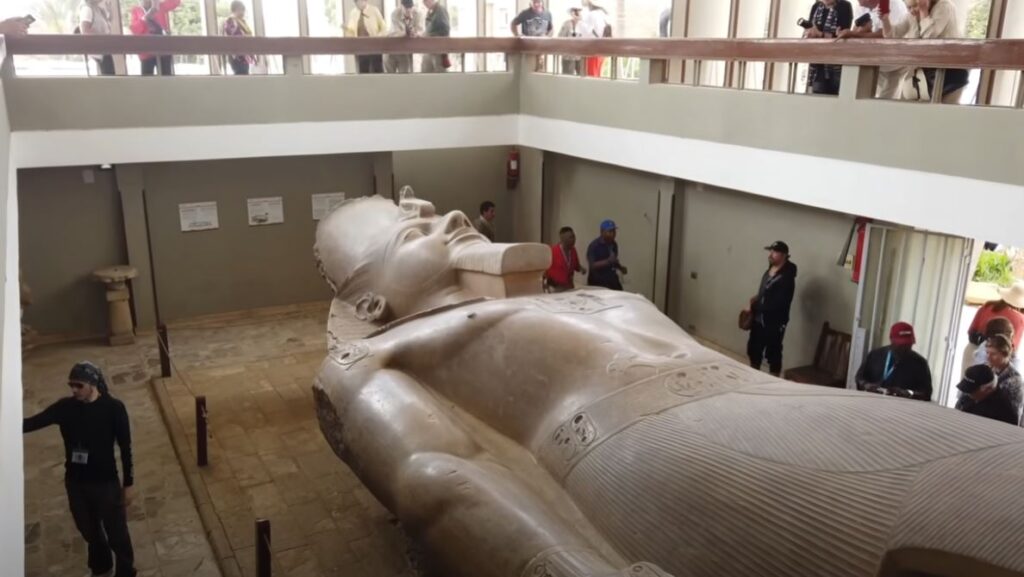
Egypt, a land of mystery and ancient grandeur, is home to some of the world’s most awe-inspiring archaeological sites. Among these, the Red Pyramid and Bent Pyramid at Dahshur and the colossal statue of Ramses II at Memphis stand as powerful reminders of the architectural brilliance and cultural richness of ancient Egypt.
Dahshur, located just south of Cairo, is less frequented by tourists compared to Giza, yet it holds some of the most important and experimental pyramids in Egyptian history. The Red Pyramid, built during the reign of Pharaoh Sneferu in the 26th century BCE, is considered Egypt’s first successful attempt at a “true” pyramid—meaning it has smooth sides rather than stepped layers. It gets its name from the reddish hue of its limestone blocks. Standing 104 meters tall, it remains the third-largest pyramid in Egypt and provides visitors with a quieter, more intimate experience compared to the bustling Giza Plateau.

Close to the Red Pyramid is the intriguing Bent Pyramid, another creation of Sneferu. This pyramid marks a transitional phase in pyramid construction. Its lower section rises at a steep angle of 54 degrees, but midway, the angle changes to 43 degrees, giving it a unique “bent” appearance. Scholars believe this change was due to structural concerns—engineers may have realized the original angle was too steep and adjusted midway to prevent collapse. Despite its unusual shape, the Bent Pyramid is incredibly well-preserved, even retaining some of its smooth limestone casing.

A short drive from Dahshur brings you to the ancient city of Memphis, once the capital of Egypt during the Old Kingdom. Though little remains of the grand city today, one of its most striking attractions is the enormous limestone statue of Ramses II. This colossal figure lies on its back in a specially built museum structure. Measuring over 10 meters in length, the statue showcases intricate detailing, especially on the face and torso. Ramses II, often regarded as Egypt’s most powerful pharaoh, is immortalized in countless monuments, but this particular sculpture highlights his grandeur in an incredibly personal and imposing way.
Together, these sites offer a glimpse into the evolution of ancient Egyptian architecture and royal ambition. The pyramids at Dahshur show the early experimentation that eventually led to the great pyramids at Giza. Meanwhile, the statue of Ramses II represents the legacy of Egypt’s most celebrated ruler and the emphasis placed on monumental art as a means of projecting power.

Visiting Dahshur and Memphis is like stepping into a time machine. These locations are not only rich in history but are also less crowded, giving visitors a rare chance to connect with Egypt’s past in a more personal and contemplative way.


